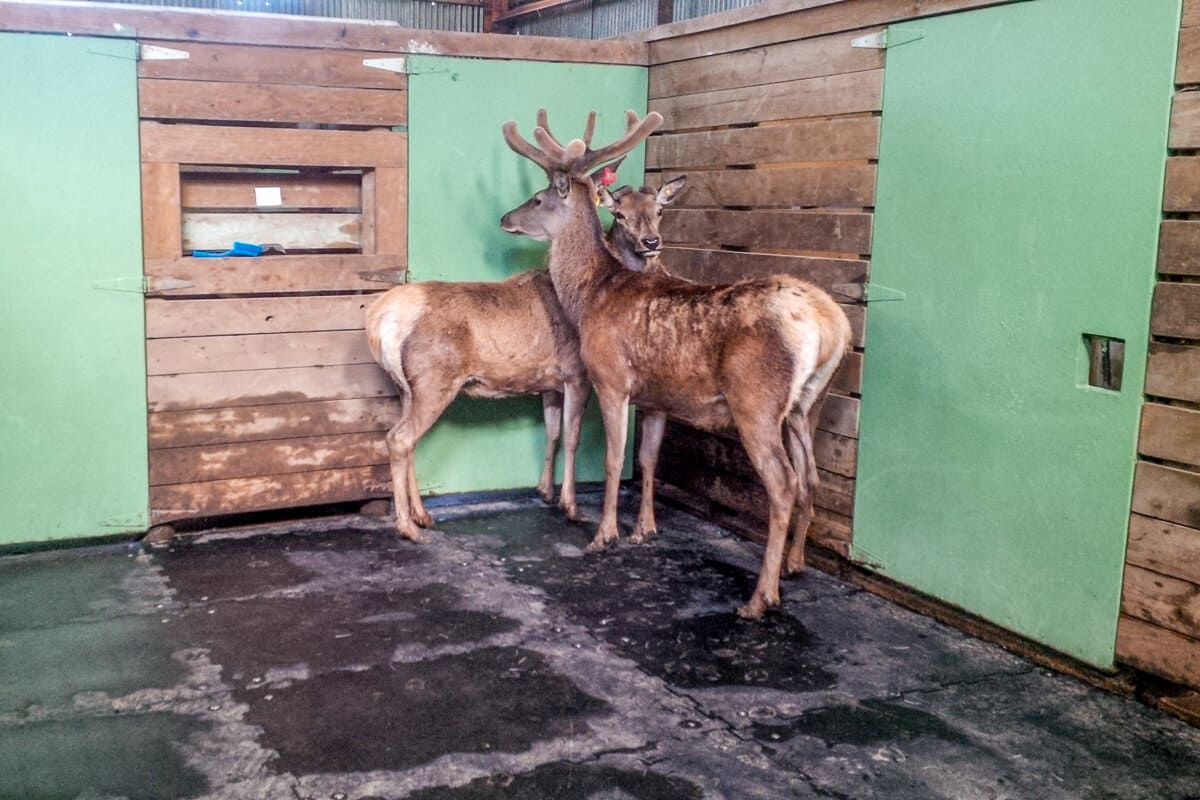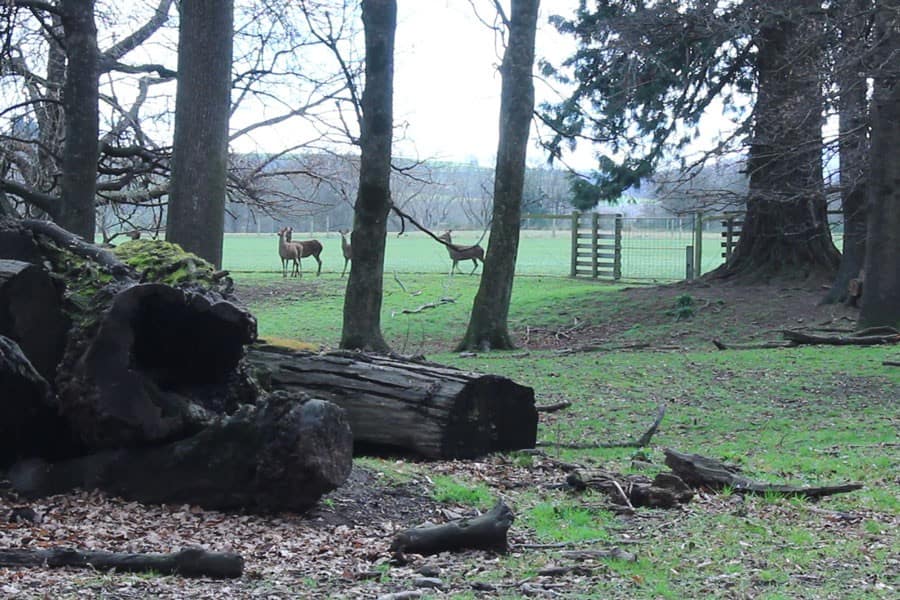Minimise the risk of foot abscesses in deer

What causes foot abscesses in deer?
If a deer has damaged skin then bacteria can get into the cut or abrasion and cause a foot abscess. Damaged skin or abrasions can be caused by sharp objects, rough concrete surfaces and sharp stones in yards or paddocks.
The foot abscess will most likely cause the deer to go lame. You may notice it lags behind the rest of the mob and it might have swollen leg joints. Foot abscesses in deer are often caused by a bacteria called Fusiformis. Fusiformis is an organism normally found in the deer’s intestine and it can survive well in faeces, mud and soil. If a deer has damaged skin and then is exposed to the Fusiformis bacteria it is at risk of getting a foot abscess.
The fusiformis bacteria can be spread through the deer’s bloodstream, taking the infection to the liver, lungs and brain. A fever can develop, indicating infection. When deer lag behind the mob, it may indicate that foot abscess has spread to the lungs.
A foot abscess caused by Fusiformis will cause slowing growth rates and or weight loss. If the condition becomes widespread and established in the liver and lungs of an animal then a fever will result. The deer will lose their appetite, suffer respiratory distress and in some cases die. The disease can become widespread among the mob.
If you see signs of lameness in your deer herd then take quick action by getting your vet out to confirm the diagnosis and start treatment with antibiotics.
How to minimise the risk of foot abscesses in deer
The best way to minimise the risk of foot abscesses is to minimise the chance of deer being injured or getting damaged skin. Here’s 6 things you can do to reduce the risk of foot abscesses in deer:
- Check there are no sharp objects or surfaces in your deer yards or paddocks and make sure the surface in your yards is smooth and not sharp.
- Protective matting in deer sheds, yards and transport trucks can reduce the chance of foot abrasion and injury.
- Always check your deer for any signs of injury after they have been transported by truck.
- Cleaning of surfaces in the deer shed with disinfectant will reduce the presence of bacteria.
- Reduce stress, particularly from over-crowding in muddy conditions.
- Provide optimal feed and make sure deer don’t suffer from other animal health conditions.

Protective matting for deer sheds and yards
Installing quality rubber matting in your deer shed greatly reduces the chances of skin abrasions when compared to concrete surfacing.
Smoothed concrete is slippery especially when wet and your deer are at risk of slipping and injuring themselves. Textured concrete and broom-finished surfaces provide better traction; however, they can be abrasive and wear down deer hooves and cause foot abrasions. Textured concrete can be hard to keep clean with the porous surface making it hard to hose off all dirt and faeces.
Numat rubber matting for deer sheds is non-abrasive on hooves, with durable softness, great grip and shock absorption. Rubber matting provides increased productivity with a warmer, quieter, more comfortable environment. This leads to reduced stress, falls and lameness in your animals.
4 ways rubber matting can help reduce foot abscesses in deer:
- Non abrasive surface reduces skin abrasions and hoof damage
- Great grip so deer are less likely to fall and injure themselves
- Warmer and quieter surface makes deer calmer and less stressed while in the shed and less likely to get injured
- Rubber matting is non porous and easy to wash down with a hose and disinfect
Find out more about our range of matting for Deer sheds, yards and transport >
Take a look at a case study from one of our customers
The “Rolls Royce” of matting for deer at Raincliff Station, South Canterbury
 Located near Pleasant Point, South Canterbury, Raincliff Station is a 755-hectare deer farm that runs primarily a velvet operation with over 4000 head of deer.
Located near Pleasant Point, South Canterbury, Raincliff Station is a 755-hectare deer farm that runs primarily a velvet operation with over 4000 head of deer.
Dave Morgan, the owner of Raincliff Station, explains that they had had concrete floors and bark chip in the past, but that he had always wanted quality matting, like the kind that Numat offer, saying “I thought this was the Rolls Royce. We want to try and operate in that top 5% of operating deer farmers”.
Dave acknowledges that cost is often the primary factor for farmers when it comes to making a decision on products, but that “you’ve got to weigh that up with the benefits” that come with investing in a high-quality, durable matting: “It’s a lot of money to spend on concrete and then put rubber on top, but the alternative is either pretty dusty, or concrete which is just hard work on the animal and on the human being.
Knowing that handling is a big part of looking after your stock, Dave wanted to put in place a preventative measure that would take in account the welfare and comfort of the deer, stating “we were wanting to make sure we didn’t get any feet problems, like the foot burning on the concrete, or bruising on the foot.”
Read more >